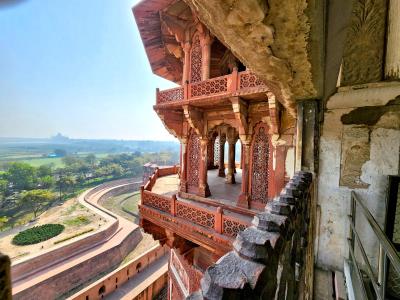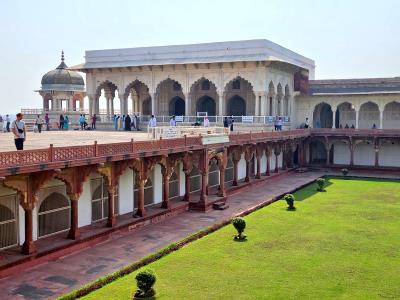Day 6 2/28/2023
India - Agra
Frank's Trip
CLICK on any image to enlarge - use mouse cursor to move enlargement it if doesn't fit area
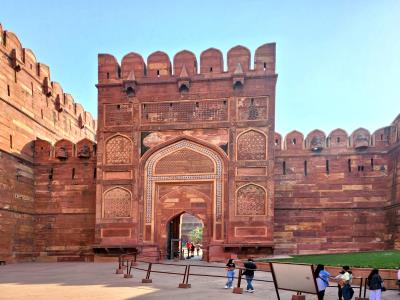
The 'Baby Taj' and the Red Fort...
The trip to Agra left me drained and I spent the next day resting up. I got started back seriously today with a visit to the "Baby Taj" - a tomb that reputedly inspired the Taj Mahal.
Agra Fort - the Red Fort - was very large and a bit of a challenge for me. But it worked out well. Tomorrow, on the the Featured Attraction of the whole India trip - The Taj Mahal!

Welcome to the City of Taj
G20 for 2023 in India
The G20 was taking place while I was in Agra. Extra traffic. I didn't even get a party invite by the USA contingent. How rude!
Itimad-ud-Daulah's Tomb (known as "Baby Taj")
This garden/tomb is laid out in a fashion of a walled garden, a Char-Bagh or 4 quartered garden. The tomb is the centerpiece while the whole is bounded by enclosing walls and side buildings. This was built about 1622.
On the banks of the Yamuna River sits another one of Agra's exquisite structures: Itimad-ud-Daulah's Tomb. The mausoleum contains the remains of Mirza Ghiyas Beg, a Persian official who served the Mughal empire, as well as his wife.
Legend has it that this jewelry box-like tomb was actually the inspiration for the Taj Mahal, earning it the nickname "Baby Taj." The red sandstone and marble structure features 13-meter-high hexagonal towers on each corner.
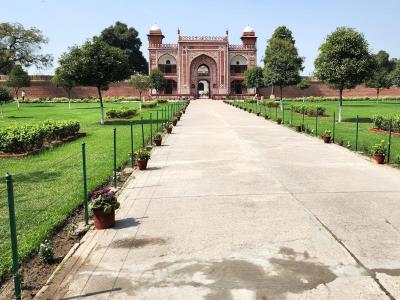
Entrance
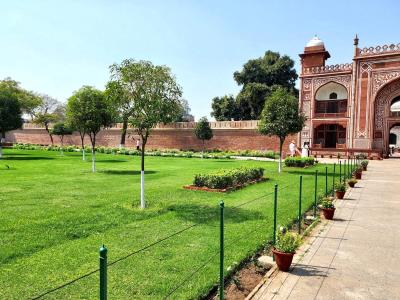
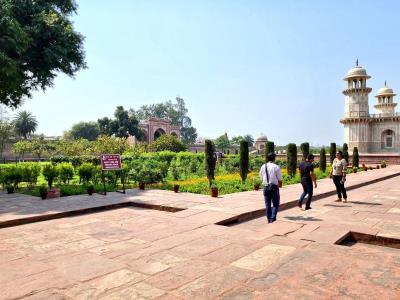
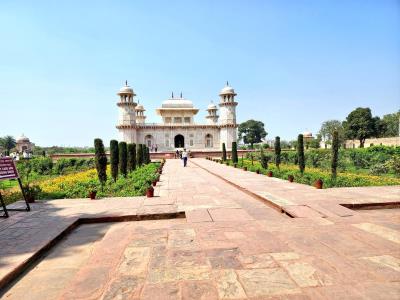
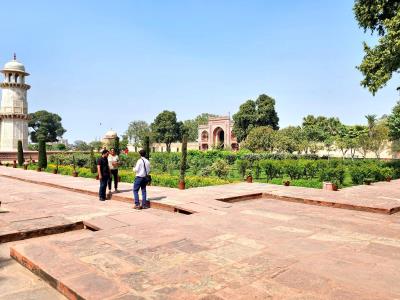
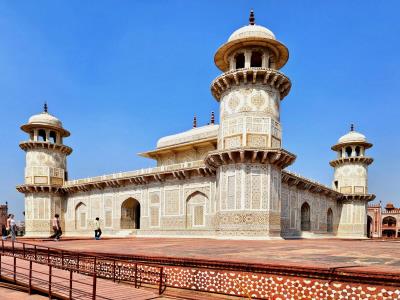
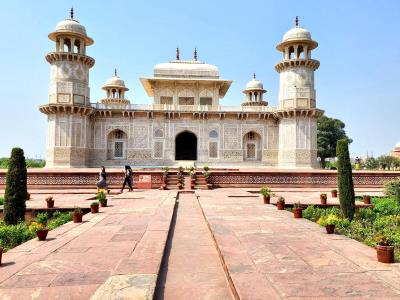
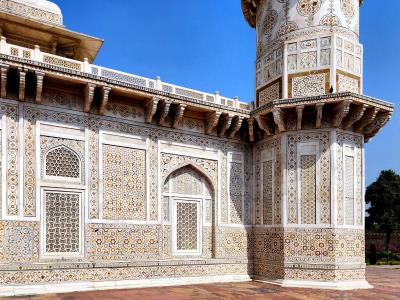
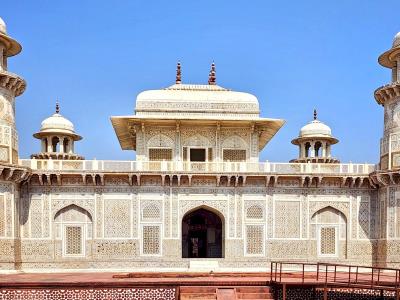
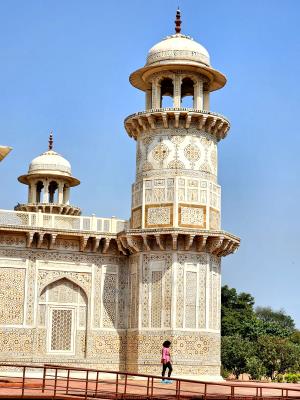
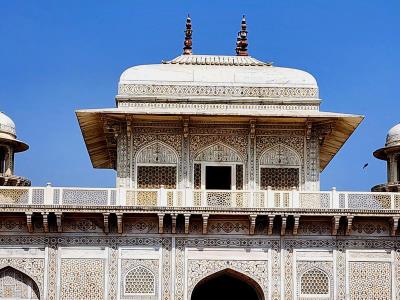
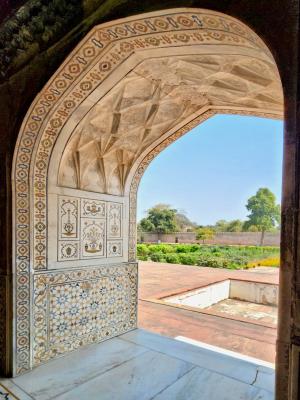
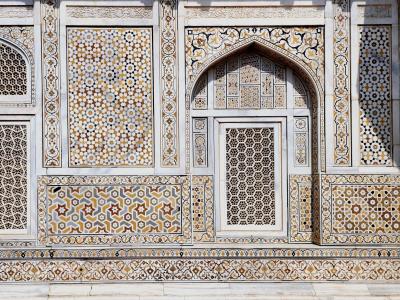
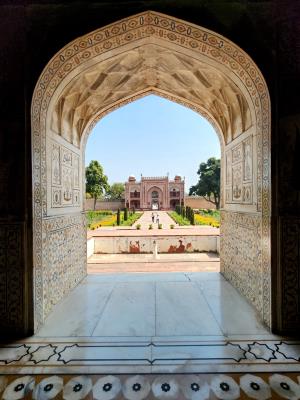
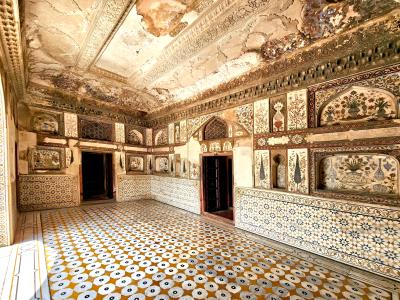
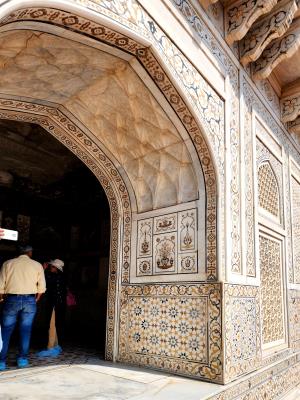
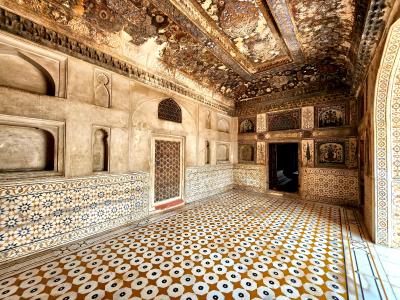
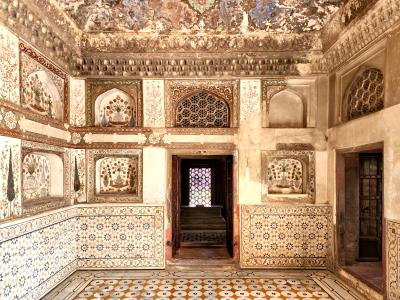
Posterity
500 years hence, will there be anything from our current world that people will look at and appreciate the artistry and craftsmanship and dedication of assets that were used in its creation?
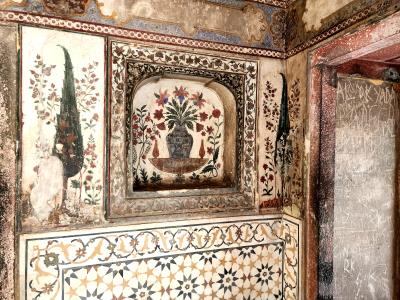
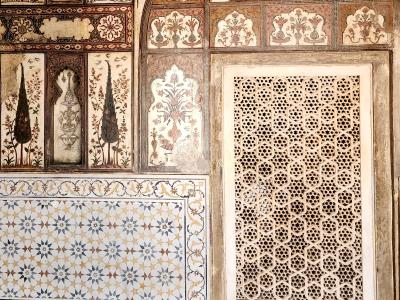
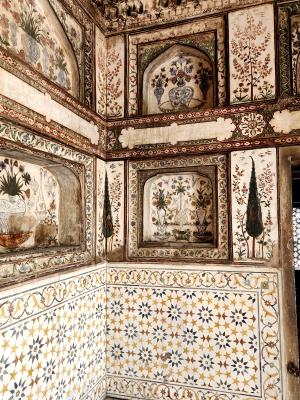
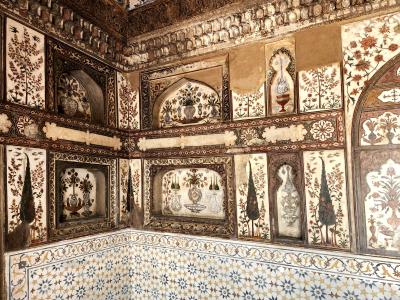
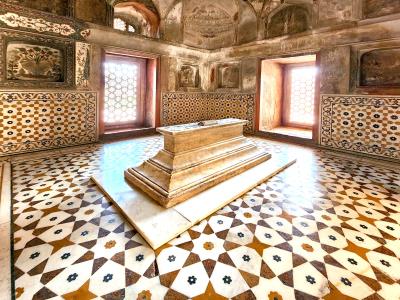
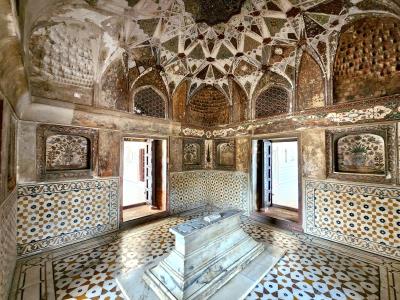
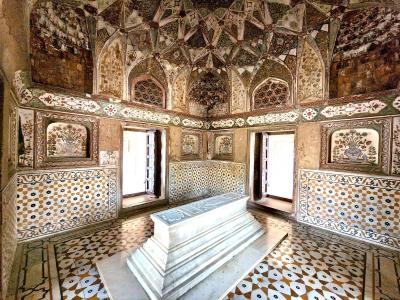
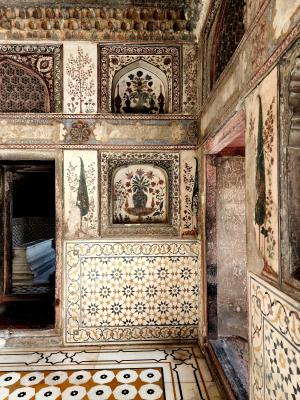
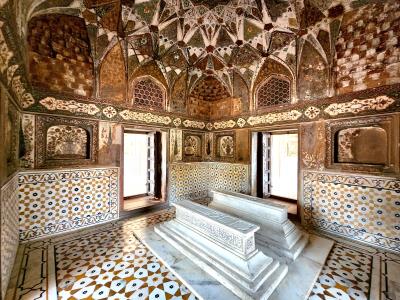
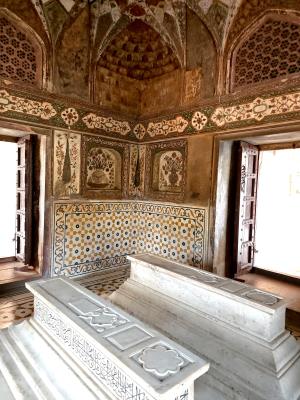
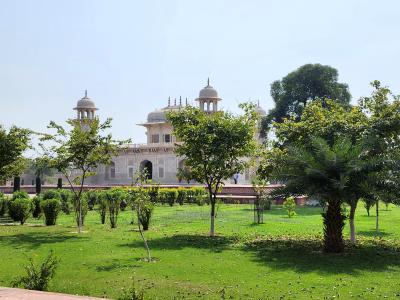
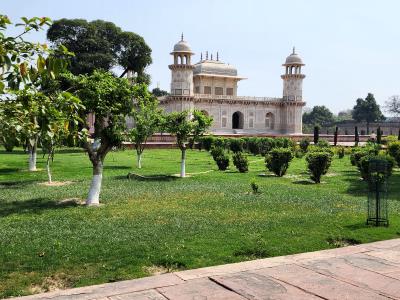
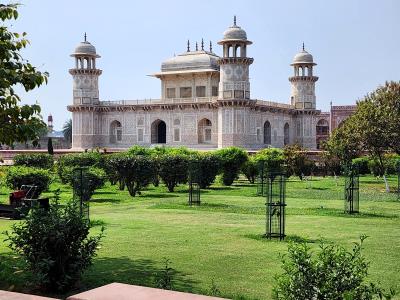
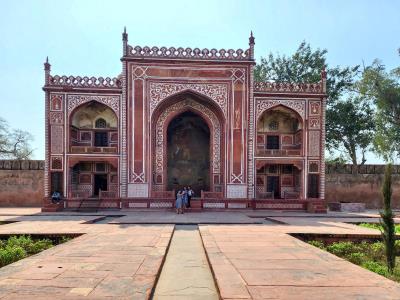
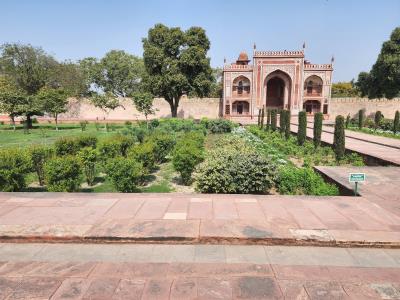
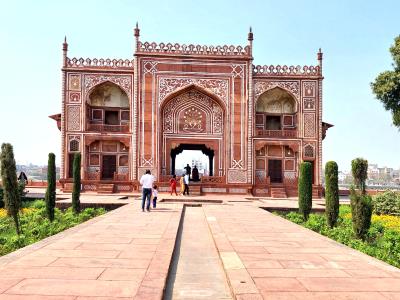
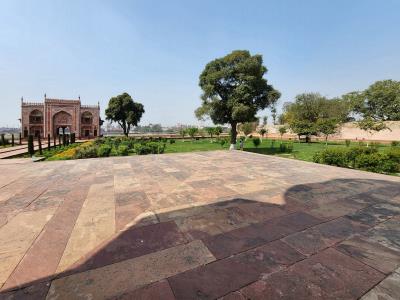
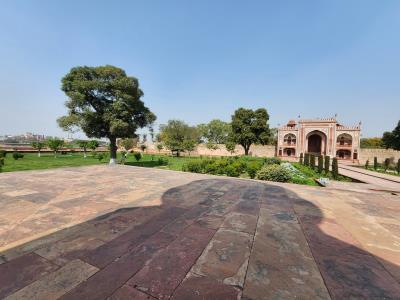
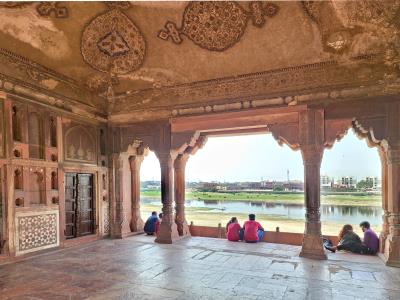
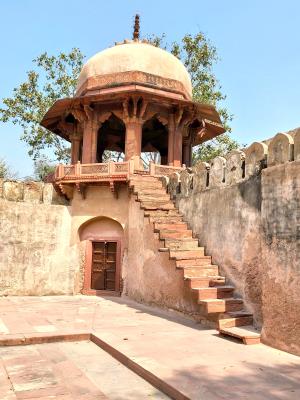
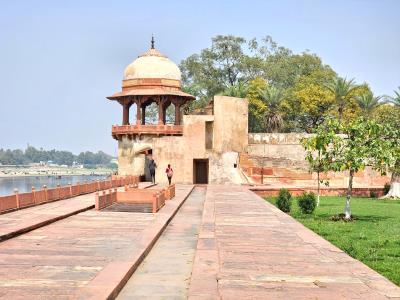
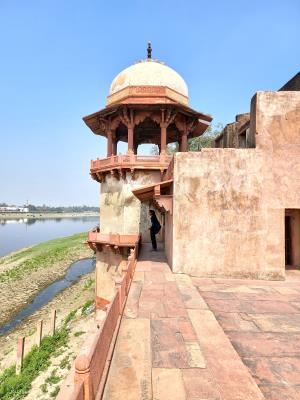
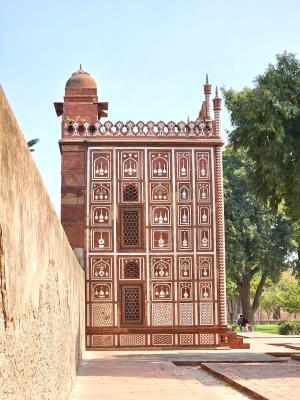
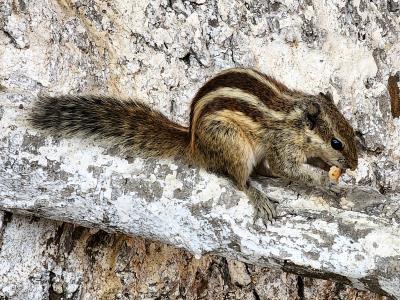
Built 1573, Agra Fort encloses 94 acres.
This powerful fortress of red sandstone encompasses, within its 1.5 mile long enclosure walls, the imperial city of the Mughal rulers. It encompasses a number of palaces and important buildings.
Agra Fort was built under the reign of Akbar – one of the greatest Mughal Emperors. It took more than 4000 workers and eight years of hardship to complete the fort. Knowing the significance of its location, Akbar built the fort to make it the main residence of the Mughals. The fort remained as the main residence of the emperors belonging to the Mughal dynasty until the year 1638.
There are many components to the overall Red Fort Complex.
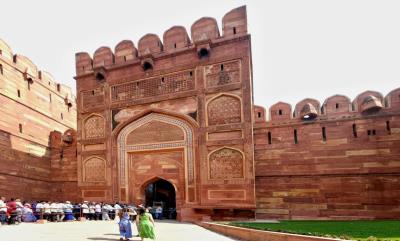
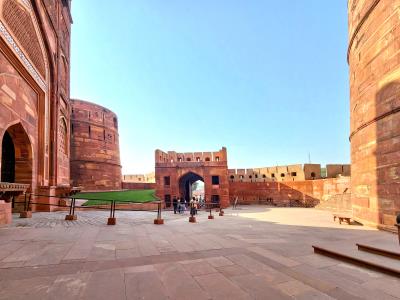
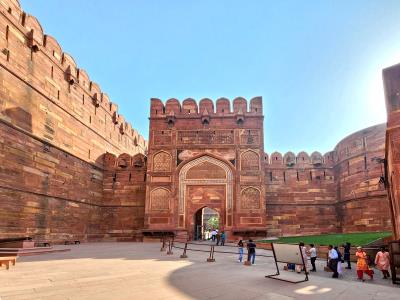

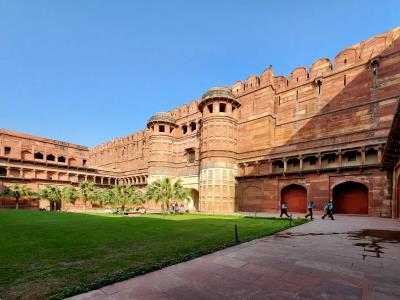
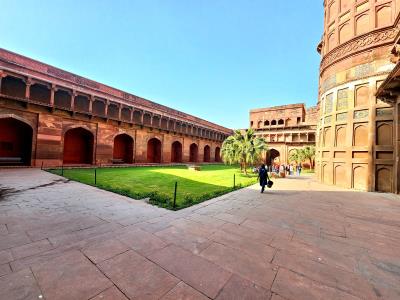
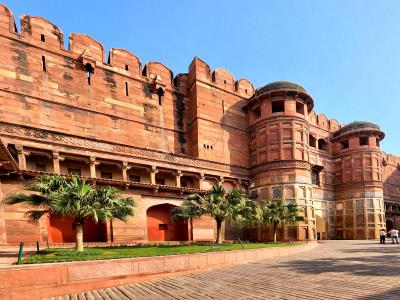
Jahangiri Mahal
Built by Emperor Akbar for his son Jahangir (from which it derives its name), its primary function was to serve as a residence of the Rajput wives of Emperor Akbar. A splendid red sandstone structure, the building combines decorative features associated with Hindu, Islamic and Christian religions, depicting Emperor Akbar's liberal reign.
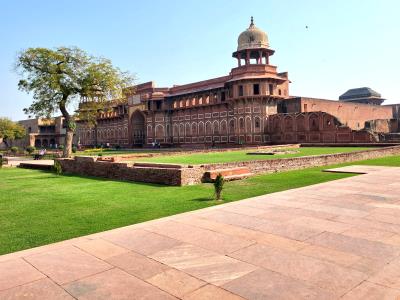
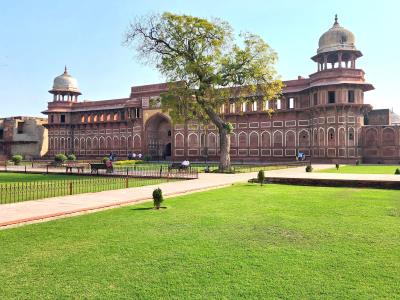
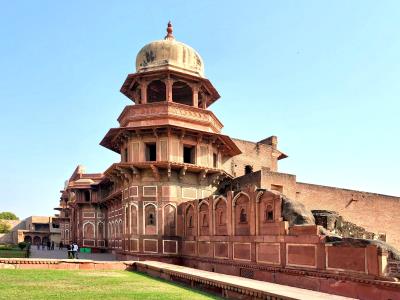
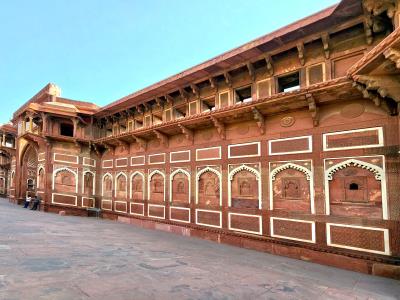
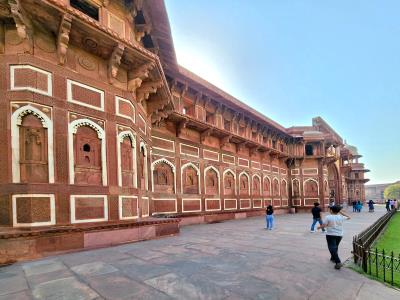
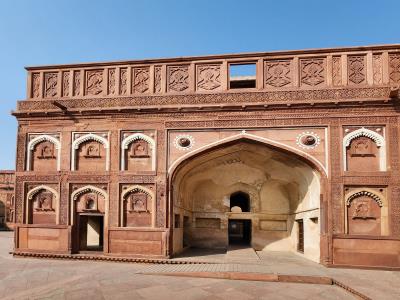
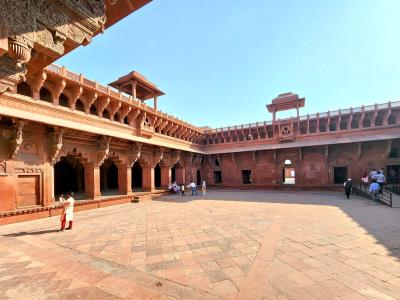
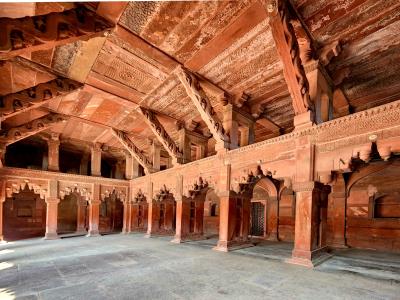
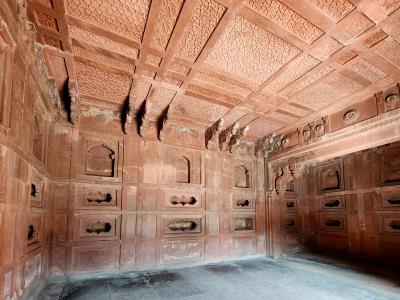
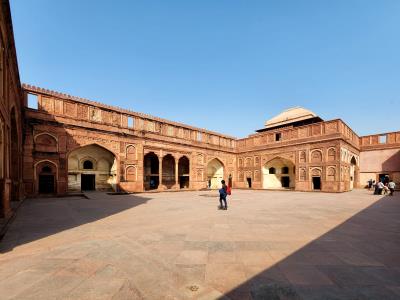
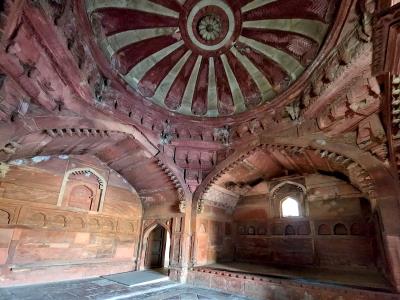
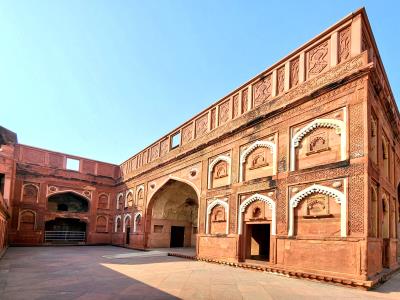
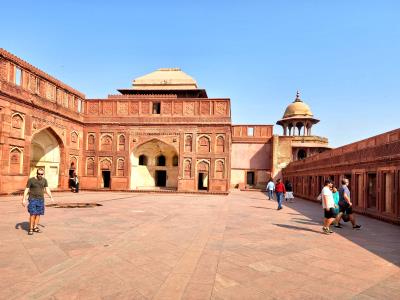
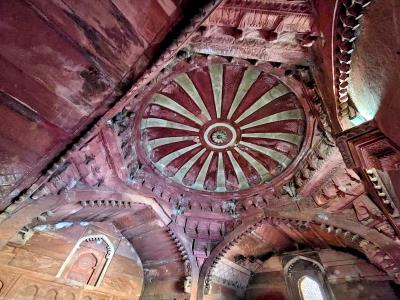
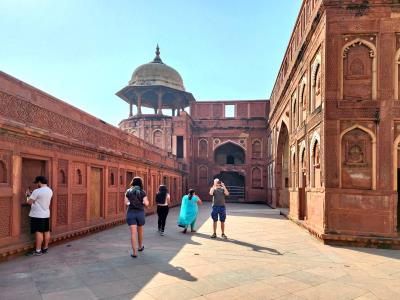
Muthamman Burj / Musamman Burj
Muthamman Burj or the Octagonal Tower was built between the years 1631 and 1640 and is believed to have been built by Shah Jehan (builder of the Taj Mahal) as the palace of his beloved queen Mumtaz Mahal.
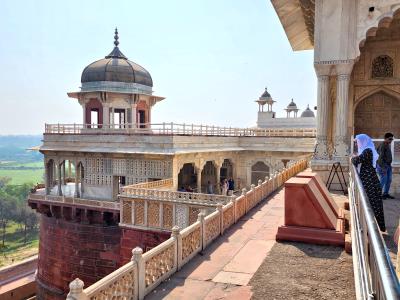
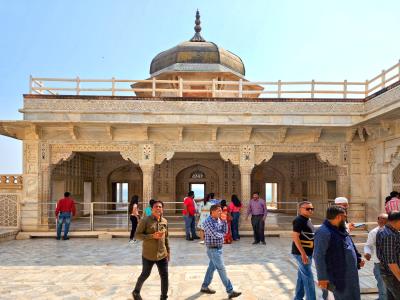
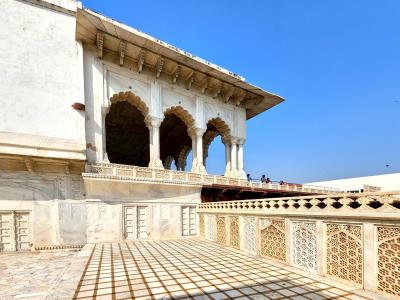
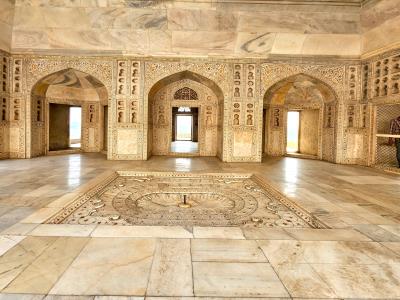
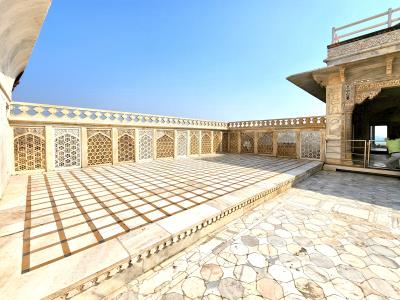
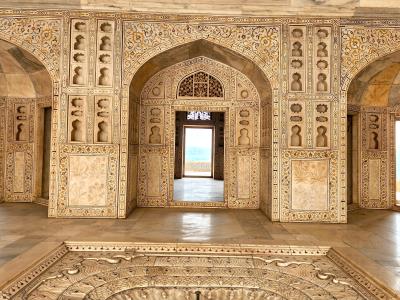
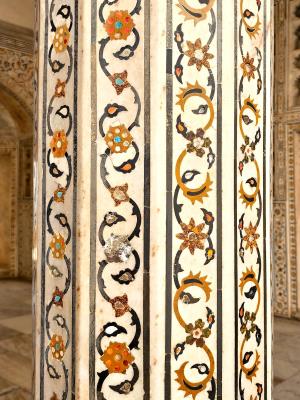
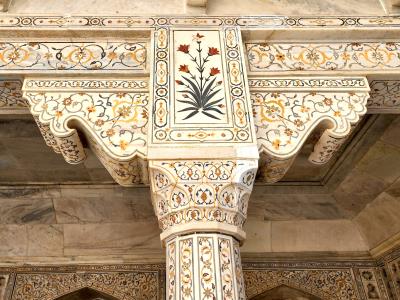
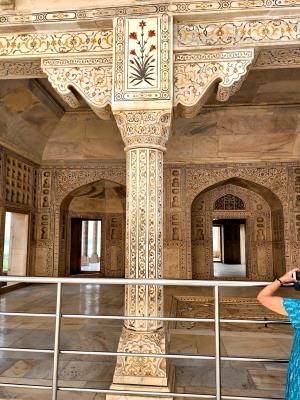
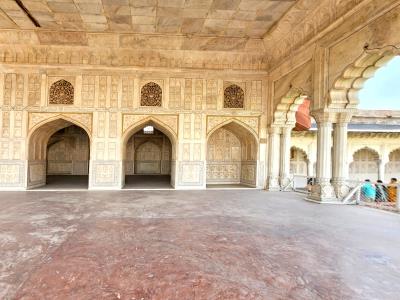
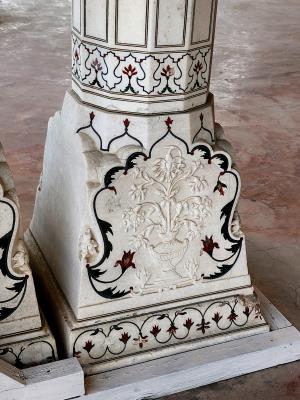
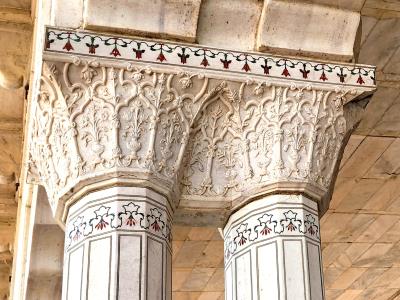
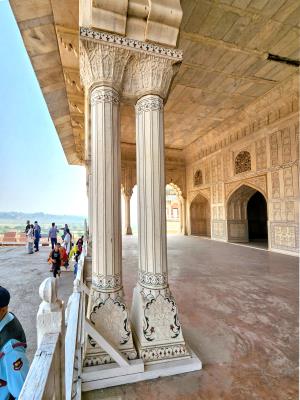
Jahanara - "Golden Pavilions"
Flanking the Khaas Mahal on either side, the Golden Pavilions are beautifully designed and are in slight contrast to the surrounding structures. The roofs designed like the spire of a Bengali hut give the overall structure, the appearance of a palanquin. Although the purpose of these structures is not immediately clear, they are believed to have belonged to Jahanara Begum and Roshanara Begum, the two daughters of emperor Shah Jahan.
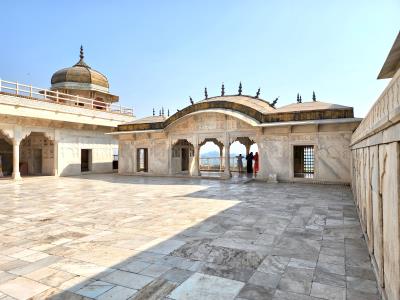
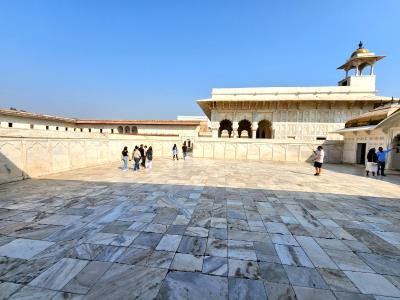
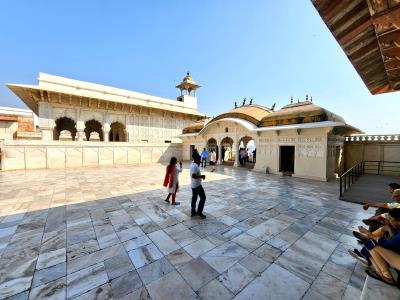
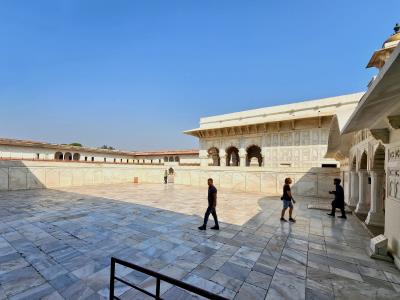
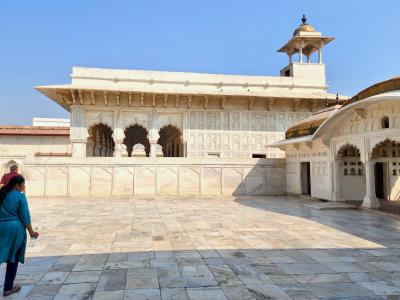
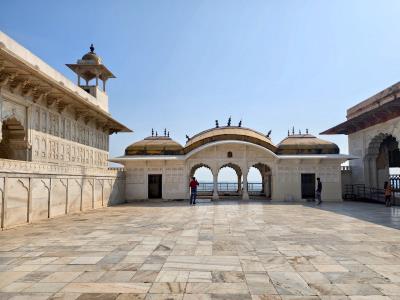
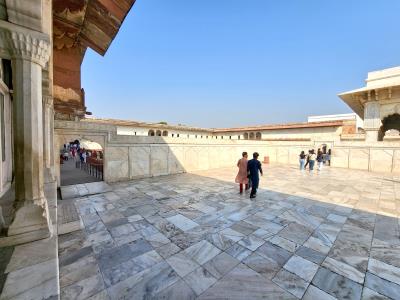
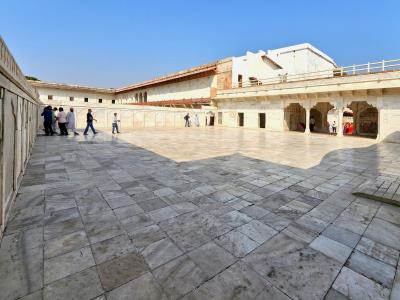
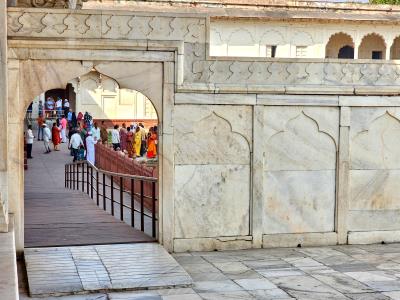
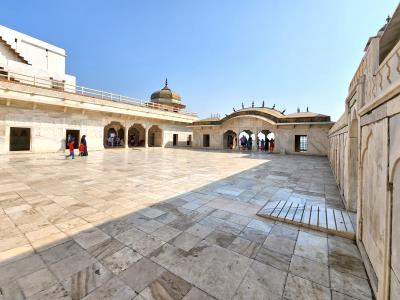
Khas Mahal
The White Marble Palace of Shah Jahan. Built as a private residence for Emperor Shah Jahan between 1631 to 1640, Khas Mahal is made entirely of white marble and overlooks the surging river Yamuna to its east and the Anguri Bagh to its west. To the either side of Khas Mahal lies Golden Pavilions, which were believed to be the residence of Shah Jahan's daughters Jahanara and Roshanara. The Khas Mahal is one of the striking pieces of architectural design within the Agra Fort.
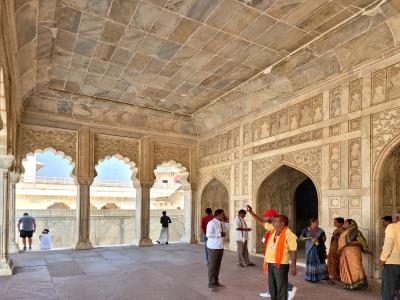
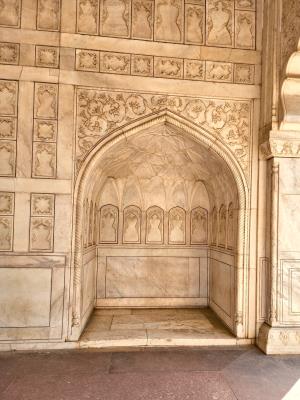
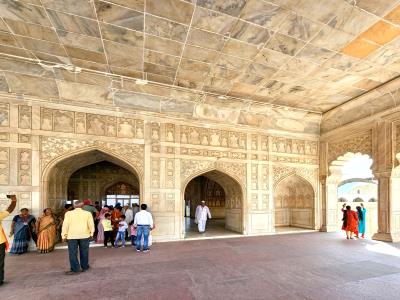
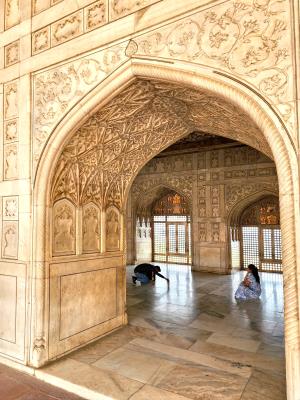
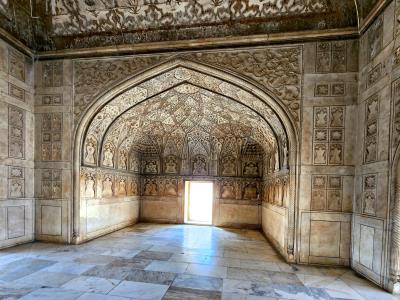
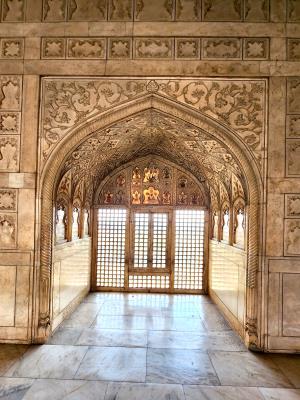
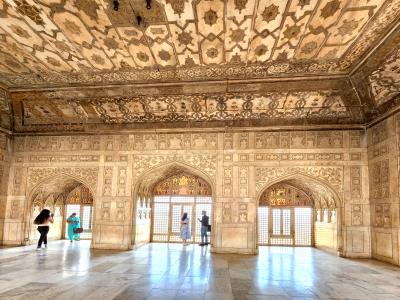
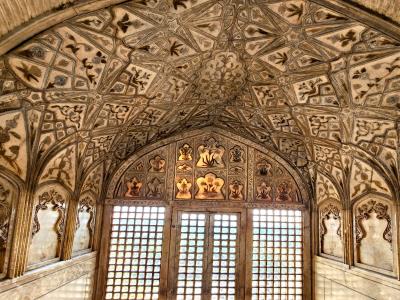
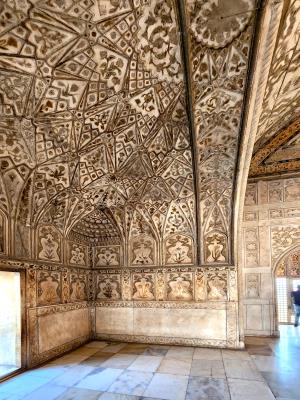
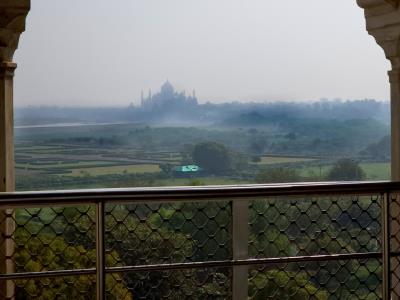
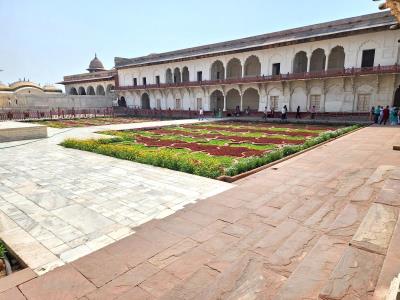
Anguri Bagh
a courtyard with puzzle piece-like outlines of gardens around water channels
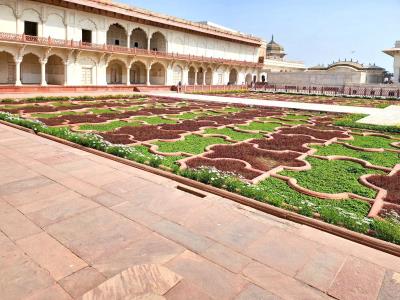
Rang Mahal - "Queens' Residence"
Flanking the Anguri Bagh in three directions, the Rang Mahal was the residence of the wives and numerous mistresses of the emperor.
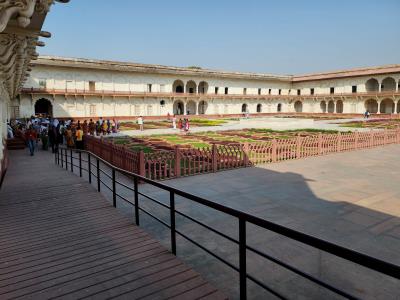
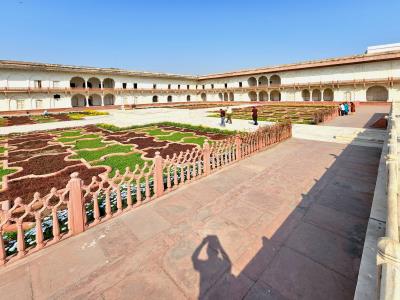
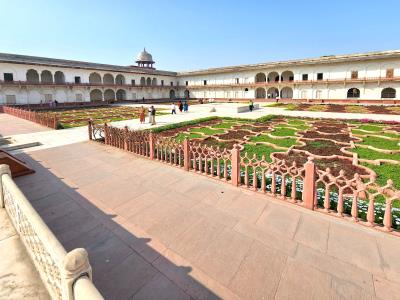
Meena Masjid
Meena Masjid is a mosque which was built by Shah Jahan. The mosque was built using white marble only and was considered a private place of worship.
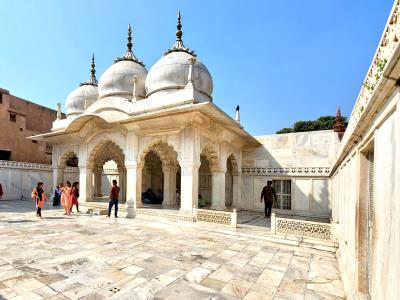
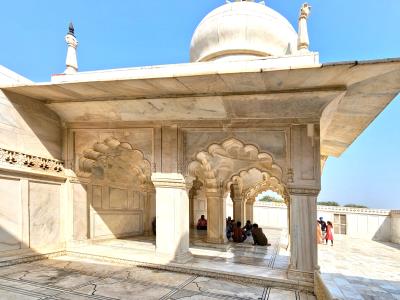
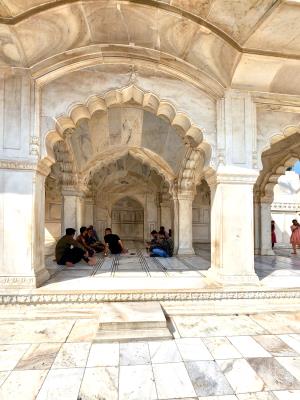
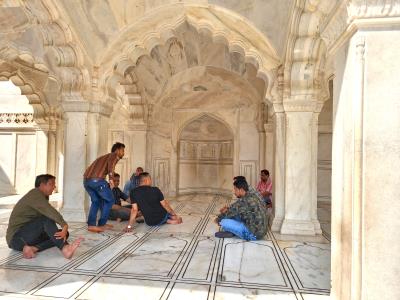
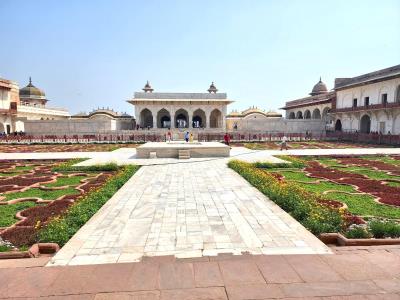
Diwan-i-Khas
A feature common to the forts built by Mughals, is the Diwan-i-Khas, which literally means hall of private audience. The one at the Agra Fort is a sterling edifice replete with symmetrical marble arches and magnificent artwork within. The hall was used exclusively for meeting special dignitaries as well as receiving royal visitors. A symbol of the Mughal royalty, influence and opulence, the Diwan-i-Khas is a very significant part of the fort.
Diwan-i-Aam
Hall of Audience. This is where the Mughal Emperor, Shah Jahan would hold public meetings with the people and attend to their problems. Viewed purely in terms of architecture, it is a spectacular combination of finesse and design.
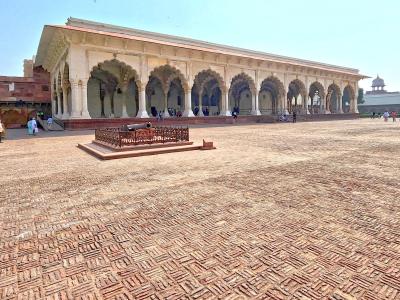
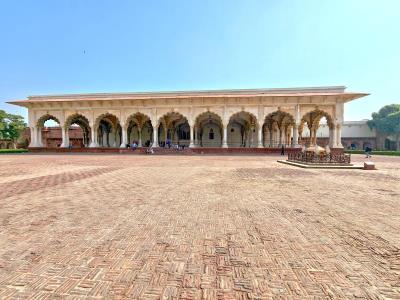
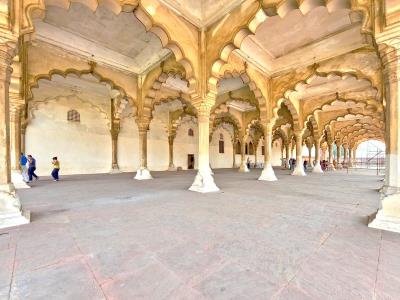
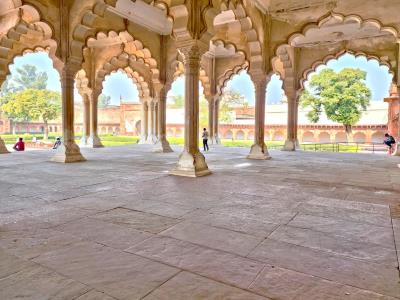
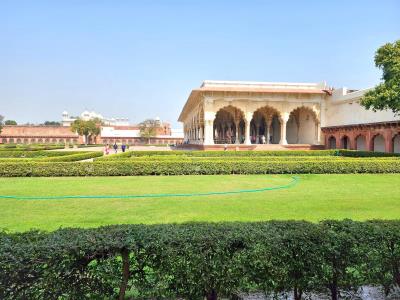
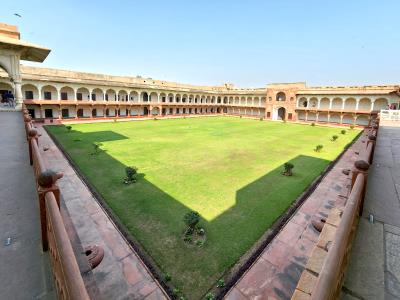
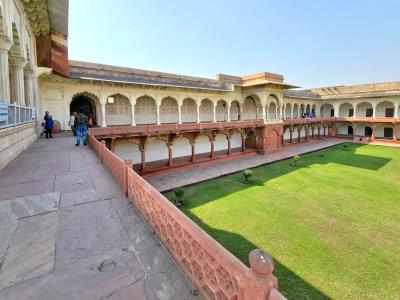
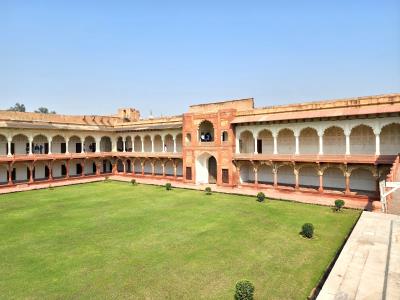
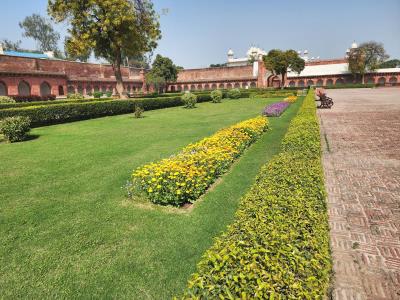
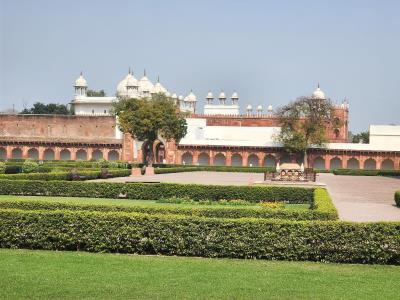
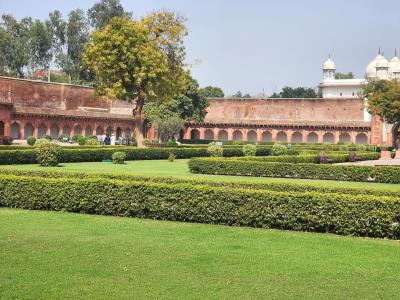
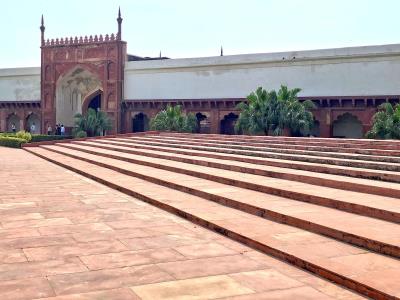
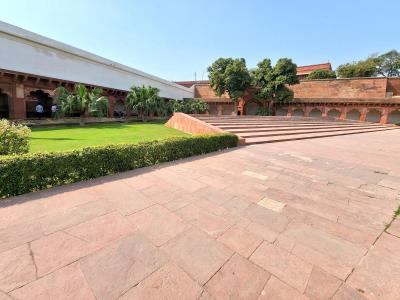
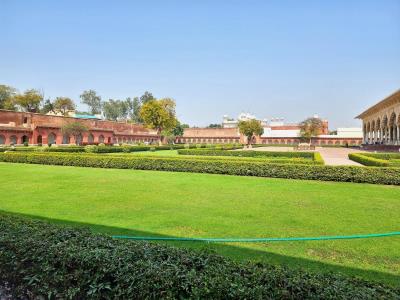
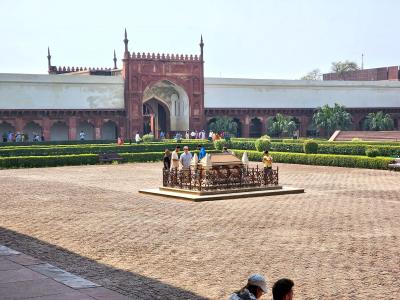
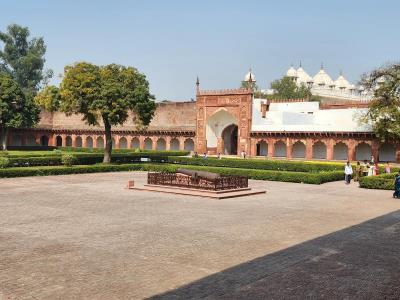
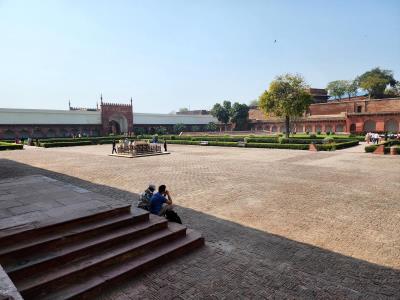
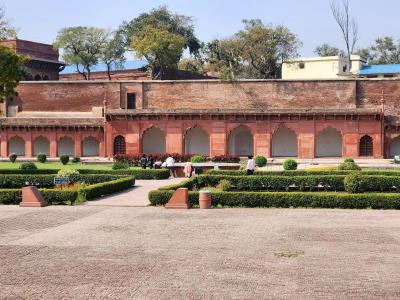
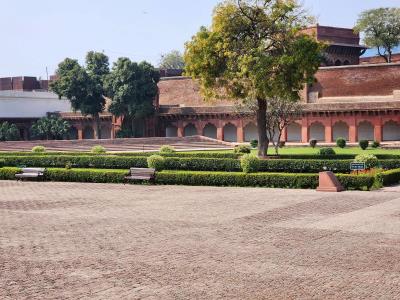
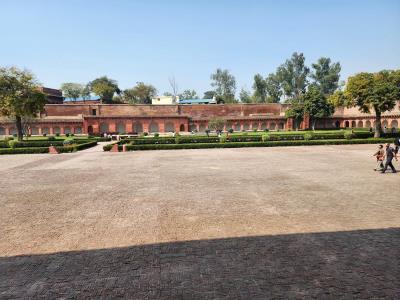
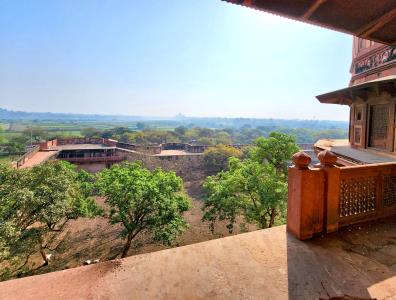
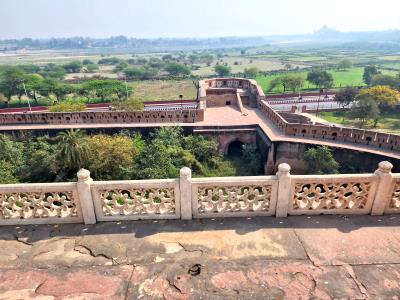
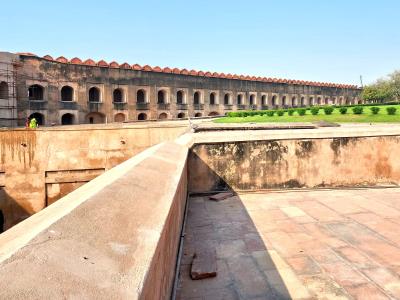
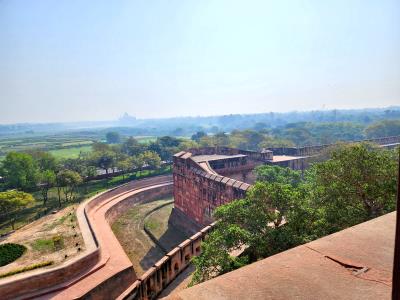
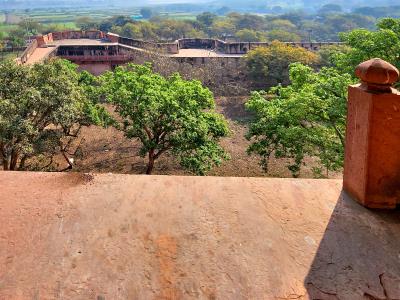
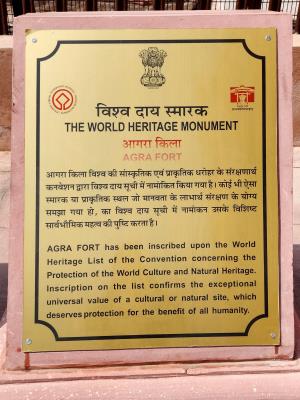
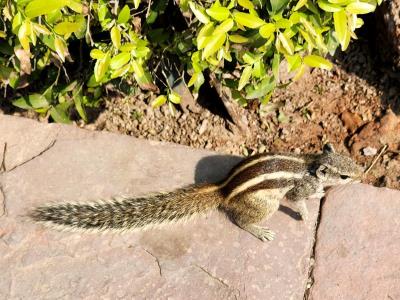
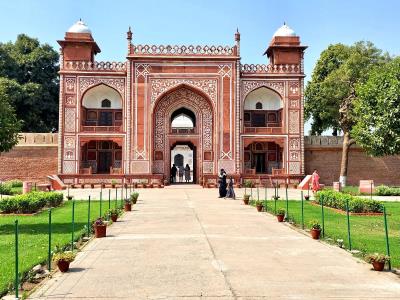
 Agra Fort Complex - Red Fort
Agra Fort Complex - Red Fort 